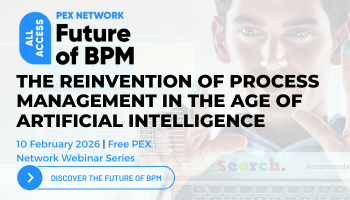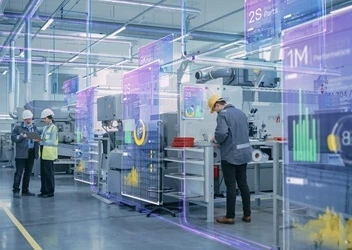Lean Six Sigma’s relevance in 2025: A contemporary guide to organizational excellence
For business leaders struggling with today’s volatility, Lean Six Sigma provides a proven framework that’s flexible enough to address new challenges
Add bookmark
What is Lean Six Sigma’s relevance in 2025? With artificial intelligence (AI) sweeping headlines and digital transformation remaking industries, it’s an understandable question.
Having spent two decades consulting with firms rolling out process improvement methodologies, I can say that Lean Six Sigma is not just surviving in 2025 – it’s flourishing!
However, there’s a catch: modern Lean Six Sigma has only a family resemblance to its predecessors. The principles are solid as a rock, but the practice has evolved by leaps and bounds.
Join the PEX Network community

Don't miss any news, updates or insider tips from PEX Network by getting them delivered to your inbox. Sign up to our newsletter and join our community of experts.
Learn MoreThe enduring value proposition of Lean Six Sigma’s relevance
Lean Six Sigma addresses two fundamental business issues that never go away: minimizing waste and reducing variation. In fact, these requirements are more paramount (not less) in today’s digital age. I have observed three general trends that are making Lean Six Sigma more pertinent than ever.
First, new complexities have been introduced by digital activities. A healthcare customer discovered its digital transformation established information silos and workflow redundancies rather than abolishing them. Its remastered Lean program uncovered digital waste that was costing them millions annually.
Second, customers expect lightning speed with no sacrifice of quality. Remember when two-day delivery was revolutionary? Now we’re observing same-day deliveries in progress and the expectation of zero defects. Lean Six Sigma’s rigorous approach ensures speed doesn’t come at the cost of excellence.
Finally, sustainability is no longer an option. When one manufacturing buyer was faced with stringent environmental regulations, its existing Lean Six Sigma program was the perfect platform to start from. After all, removing waste has always been a core tenet of the Lean philosophy – they simply expanded the definition of “waste” to include environmental impact.
Reimagining Lean Six Sigma for today’s world
The firms achieving disproportionate returns from Lean Six Sigma in 2025 have reimaged their strategy. Here’s what they're doing differently.
1. Digitally augmented DMAIC
The traditional DMAIC process (Define, Measure, Analyze, Improve, Control) is very different now. I recently witnessed a team within a financial services company transform its Define phase by using AI to analyze customer complaints in real-time. Rather than spending weeks defining problems, they defined pain points in days.
In the Measure stage, clipboard audits are a thing of the past. At one logistics firm I collaborate with, internet of things (IoT) sensors monitor all aspects of operations around the clock, providing second-by-second insight into performance.
For Analysis, one telco client substituted manual statistical analysis with machine learning algorithms that detected patterns human analysts had overlooked for years.
The most effective practitioners don’t think of digital tools as an add-on – they’re integrated into the methodology from the very beginning.
2. Customer experience focus
I recall when a successful Lean Six Sigma project equated to achieving internal metrics – reductions in cycle time, defect rates and cost reductions. Those still hold some importance, but they’re no longer sufficient.
Top programs now apply the customer definition of success to define success. A retail customer recently replaced its in-house measures of effectiveness with “perfect order rate” – the percentage of orders filled correctly, on time, flawlessly and properly documented. It completely revolutionized employees’ perspective on process improvement.
3. Democratized problem-solving
The days of having improvement as the exclusive province of Black Belts are behind us. The most dramatic change I’ve witnessed was in a manufacturing company that provided all 5,000 workers with rudimentary problem-solving tools and smart phone apps to report and monitor issues.
Their slogan now reads: “everybody improves everything every day.” Within one year, they accomplished over 12,000 little improvements, most of which required no signoff or official project structure. The combined impact surpassed what traditional project teams had accomplished.
4. Embedded sustainability
Environmental considerations are now business-as-usual in innovative Lean Six Sigma projects. A chemical company I advised a year ago integrated carbon footprint into value stream maps, a practice that was unheard of ten years ago.
It discovered that seemingly effective processes were environmental liabilities, triggering redesigns that not only reduced emissions but also cost-saved 15 percent. This account shows how operational excellence (OPEX) and sustainability are now two sides of the same coin.
Starting (or restarting) your Lean Six Sigma journey
If you’re planning to start or re-start a Lean Six Sigma effort in 2025, I recommend this three-pronged approach:
- Get genuine executive commitment: This is not a question of getting leadership to “endorse” the program – it’s a matter of them being actively involved and connecting Lean Six Sigma to the organization’s most significant challenges. In one health system, the CEO attends improvement events monthly and references Lean Six Sigma on quarterly earnings calls. That level of commitment says a lot.
- Make investments in digital infrastructure: Your teams need current tools that are up to speed. Cloud-based project management, easy-to-use analytics platforms and mobile data collection software are not amenities – they’re requirements.
- Embrace flexibility: Multi-year rollouts have given way to sprint-based approaches. A customer in the financial services industry packaged Green Belt certification into two-week modules with time in between to apply in the real world. Teams achieve results while they learn, not learn first and then apply.
Front-line success stories
The best way to view what’s possible is to look at real-world examples:
A drug contract manufacturer I deal with integrated AI-powered vision systems into quality control. Drawn from Six Sigma methodologies, this approach reduced deviations by 27 percent yet accelerated production – a two-fold win previously unimaginable.
In finance, a regional bank educated 600 employees in streamlined Lean methods within six months. These empowered teams reduced processing mistakes by 40 percent, directly improving Net Promoter Scores and customer retention.
Most impressive was a retailer that applied Lean principles to last-mile delivery logistics. By combining route-optimization software with driver-generated improvement ideas, they lowered late deliveries by 18 percent while reducing fuel consumption, proving that sustainability and customer satisfaction are not opposites.
The evolution continues
What I’m most excited about with Lean Six Sigma in 2025 is that we’re witnessing evolution, not revolution. The underlying philosophy – organized, fact-based and customer-focused improvement – is still present. What’s changing are the toolkit and the deployment.
For business leaders struggling with today’s volatility, Lean Six Sigma provides a proven framework that’s flexible enough to address new challenges. It’s not a question of dogmatic adherence to tools from decades ago, but of applying timeless principles in new contexts.
After all, technologies and business models can change and vanish, but the pursuit of excellence never goes out of fashion.
All Access: Future of BPM 2026

You asked, and we listened. Business process management (BPM) remains the cornerstone technology for driving organizational transformation, according to the survey results featured in the latest PEX Report. As we look toward 2026 and beyond, generative AI, agentic AI, and intelligent process orchestration are redefining how processes are designed, executed, and optimized. BPM is your key to adapting swiftly and effectively in this new era.
PEX Network is bringing together industry leaders, technology innovators, and thought leaders to answer your biggest questions and explore the advancements reshaping business today. And you're invited. Register for free to save your spot now!
Register Now












